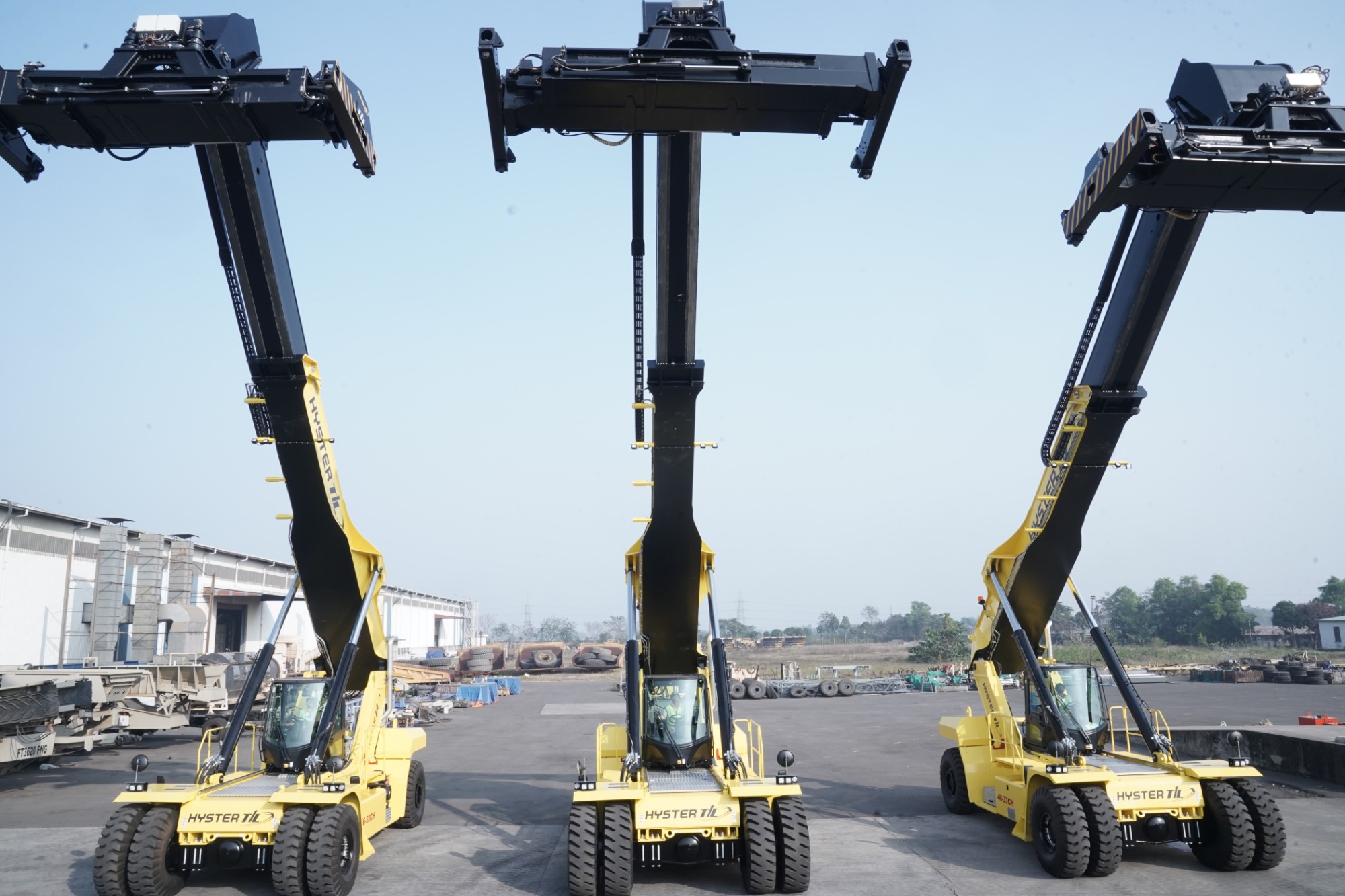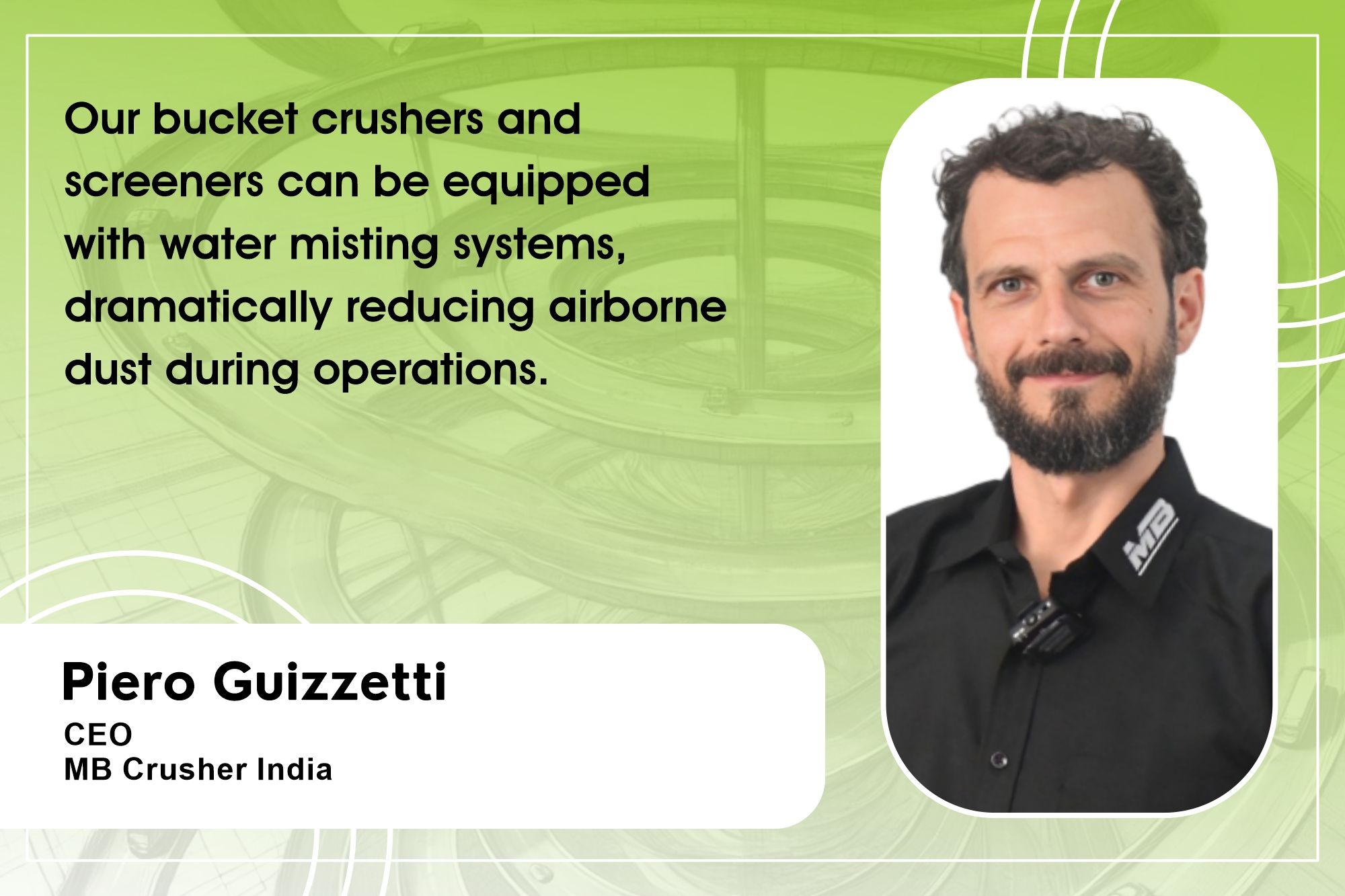Indigenous production to impact demand dynamics
By Edit Team | December 8, 2022 1:58 pm SHARE

The leaders across the construction equipment sector have shared their insights on procurement trends and challenges and highlighted the adaption of smart technologies.
Road building is an extremely technical endeavour that needs careful planning and deploying specialised road equipment.
Making a road frequently entails blasting rocks, doing extensive excavations, and performing other challenging operations that call for various construction machinery. “To create roads quickly and with high quality, automated asphalt plants, high tech pavers, and compaction equipment are essential.” says Sunil Sapru, Director, Ammann India Pvt. Ltd
According to Kranthi Kumar Ravuri, Managing Director of Vibrant Construction Equipment Pvt. Ltd., “given the government’s deadlines and speed requirements for finishing infrastructure projects, the machinery needed in these high-demand circumstances should be durable, affordable, and low maintenance”.
The performance of our bucket crushers, drum cutters, and trenching units is all associated with the flow. In addition, Dr. Piero Guizzetti, CEO of MB Crusher India Pvt. Ltd., states, “At a general level, quality is achieved with the latest technology and an unwavering commitment to quality components. For example, at MB, we use the industry’s best material for our jaw plates, which is the most expensive consumable in crushing operations”.
Additionally, speed is gained when one can set up the working environment so that the greatest amount of freedom is achieved while still retaining financial sustainability. Even in the most distant regions without electricity or generating equipment, our accessories turn any HEX or BHL into a crushing, screening, and trenching machine. All of this is done without sacrificing the standard of the output material that is crushed or the accuracy of the trenching and screening activities.
Construction equipment procurement trends
Sapru says, “Machines have changed in recent years, getting smarter, consuming less fuel, and emitting less pollution. “Today’s machinery may also interact with us and let us know when a repair is necessary, limit how much more it can create for the operator, or inform the owner if it is being attempted to be stolen.”
Ravuri adds, “The current trends in construction procurement call for putting your trust in suppliers that can deliver high-quality, reasonably priced equipment with less downtime and top-notch after-sales service.”
Guizzetti discusses how efficiency is being given more attention in the current construction environment to finish projects on time and within budget. He states “We are observing many key trends in the Indian construction business, including prefabricated materials, incentives for early completion, and just-in-time supply”. “New cutting-edge technologies, such as 3D printing and drones for surveying potential construction sites, as well as digital tools and platforms for project management and procurement, are also about to enter the Indian market.”
Procurement challenges
While discussing the procurement challenges, Guizzetti elaborates that “Since the outbreak, BFSI support has been quite underwhelming. “As a result, procurement delays have occurred in general.” Due to the delays in payments made by private and/or governmental implementing agencies, contractors have also seen a reduction in cash flow. The Central Government is now assisting state organisations in prioritising infrastructure projects and ensuring that funding is available to launch projects quickly.
Ravuri says, “Procurement is a challenging element in the current situation. The sale only suffers when the market expects the best goods at the best price.” This difficulty must be taken into account in every organisation. Thus the procurement process must be precisely planned and skillfully executed to determine the price, considering every aspect, including pricing, delivery, and payment conditions.
Sapru adds, “Many organisations, including equipment and product manufacturers, find that the procurement process is not straightforward and often challenging.” He also highlighted some common problems related to purchasing and vendor relations: such as reducing purchase risk, a lack of transparency, supplier issues, etc.
Smart Technologies
Guizzetti states, “The infrastructure sector is driven by new technologies that allow for better communication, coordination, and overall management of projects.” Drones and other autonomous vehicles can assist with mapping and surveying. 3D printing is used to develop prototypes and test things before they are mass-produced, and cloud-based project management systems are some of the primary technologies driving this efficiency. “We are also discovering new technologies like AR and VR, IoT-based devices, data analysis systems, and artificial intelligence to improve efficiency.”
Sapru elaborates on smart technologies, stating, “The construction equipment industry is in the midst of considerable change.” The customer landscape and OEMs’ expectations are shifting, new and potentially revolutionary technologies are on the horizon (such as electrification, emission standards, and big data). Competitors from emerging markets are becoming more potent.
Most trends have a global appeal, but these changes will be more pronounced in India. The Indian market has always been fragmented, complicated, and full of local standards, with OEMs concentrating on domestic markets. India’s industry is still more complicated and fragmented than other markets, even though it has been consolidating for years as demand and standards have become more global.
While emphasising smart technologies, Ravuri says, “As previously stated, the infrastructure sector market in India is currently on the rise, with many major infrastructure projects being announced and with short completion deadlines.” As a result, technology is crucial to the execution and completion of projects. The need for affordable, dependable equipment that meets client expectations is always changing, and equipment producers must be aware of this demand and quickly change their products to meet it. Reaching them may be particularly challenging when there is a breakdown because most project locations are distant. This technology provides clients with a quick fix to fix and restart the plant. Connectivity to the client is, therefore, crucial.
Sunil Sapru, Director, Ammann India Pvt. Ltd– “Indian market has always been fragmented, complicated, and full of local standards, with OEMs concentrating on domestic markets”
Dr. Piero Guizzetti, CEO of MB Crusher India Pvt. Ltd. “The current focus of the construction market is on efficiency with completion of project in time and within budget”
Kranthi Kumar Ravuri, Managing Director of Vibrant Construction Equipment Pvt. Ltd “The need for cheap but durable equipment is growing tremendously, the equipment providers should be active for satisfying customer requirements”
Cookie Consent
We use cookies to personalize your experience. By continuing to visit this website you agree to our Terms & Conditions, Privacy Policy and Cookie Policy.



































-20240213125207.png)

























